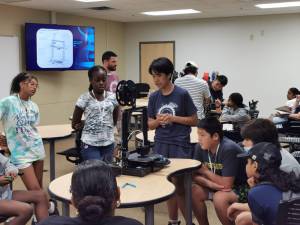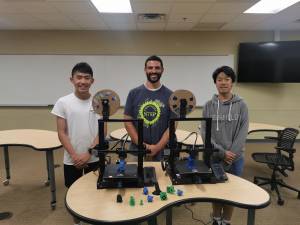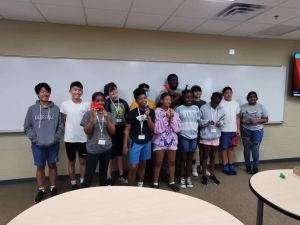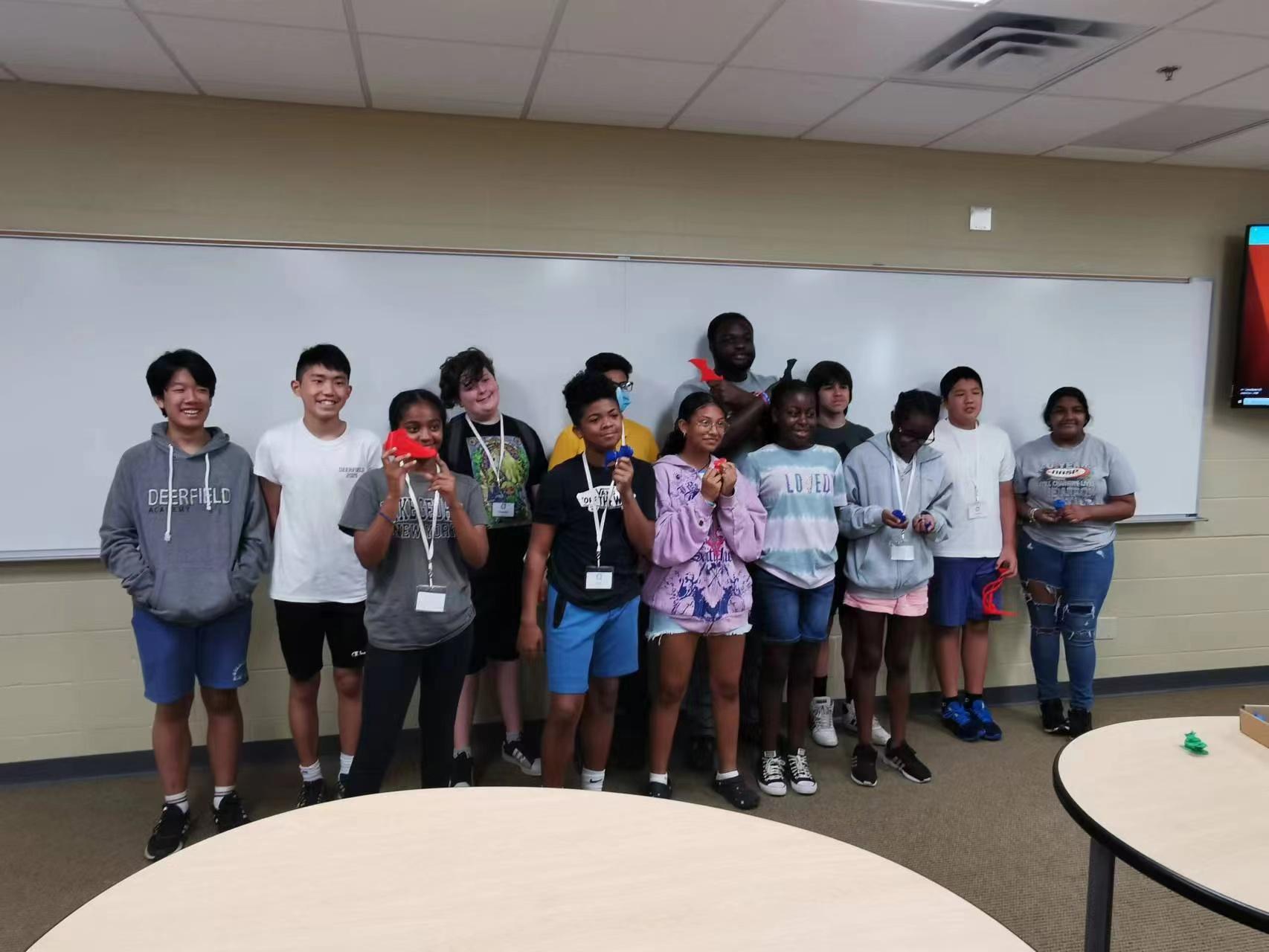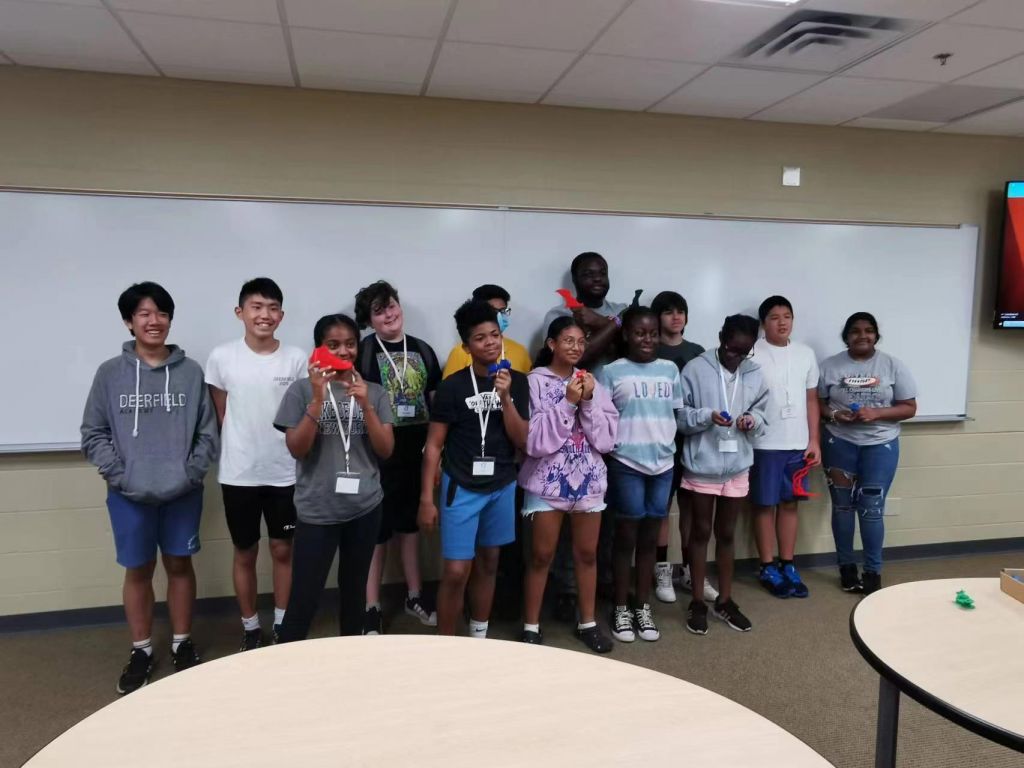Many students that are of an underrepresented race or financial class miss opportunities to learn new topics, especially ones that are on the higher cost end, such as 3D printing or most other cutting-edge sciences and technologies. Schools with limited budgets tend to cut these courses from their curriculum because they are the most expensive per student, leaving many talented students to never even discover a potential passion.
Far too many students with disadvantaged backgrounds have found their passions much too late in life, and get a disadvantage in college and even later in life. To try to alleviate this situation in our local community, we decided to ask for a summer grant from Deerfield Academy. Using the money from the grant, we were able to purchase several 3D printers that we used to teach a class of middle schoolers about additive manufacturing. We were so happy when we heard about the Science and Technology Entry Program (STEP) Summer camp that Union College, a college near where we lived, was hosting for underprivileged students. So we took the opportunity, reached out to Union, contacted the camp director who gave us two days of the camp to teach the students about the eye-opening field of 3D printing.
The camp went extremely well overall. On the first day, we introduced ourselves and the basics of the opportunities of 3D printing in the future, with the objective of giving them a feel of how much 3D printing is capable of. We let them search the internet for a print that interested them, out of millions of choices, this way they could both have something to look forward to and also feel the freedom of 3D printing. To finish up the day, we taught them some simple tools to customize their prints, such as letters, size, and rotation. We gave the students some of our prints that we had printed beforehand to keep as a gift. We started the second day by teaching them some more in-depth details about the print process and finally introduced them to CAD, which will most likely become the most useful skill in the future, due to the manufacturing industry’s higher and higher reliance on digital design. Finally, we handed out their chosen prints, which have all been successfully printed.
We both learned a lot from teaching class, not only in aspects of 3D printing while preparing for the class. Neither of us had taught an official class before, so this was something new for both of us. I would say that the most important thing that I learned from teaching is how much more effective it is to teach when students are engaged. We found this out when starting to explain the print settings, which is a rather boring part of 3D printing. We decided to change our plan on the fly, and allow the students to choose their own print first, then move on to the settings. With their own prints already in mind, it was both more exciting and easier to picture roughly what settings their own prints may require. Changing our lesson plan on the fly and adapting to the student’s learning speeds was also something that we could’ve never prepared for in a vacuum scenario but turned out to be an extremely rewarding experience. On the 2nd day of the class, we had a very front-loaded, information-packed morning of CAD and it tired the students out albeit after they finished their assignments. We then made the decision to make the rest of the day much easier for the students and ended our class day earlier so as to not overwhelm them.
The 3D printing class was very enjoyable, being able to work with both a friend from school and middle schoolers from the community. And throughout this whole teaching process, I think we were able to genuinely spark an interest in technology within some of these students which was really wholesome to see. Over the entire process of getting this class together, we achieved three great things: we learned important teaching skills, learned about 3D printing ourselves, and made a positive impact on underprivileged students in our community. This was all in all a very positive experience for us as well as the students that we taught and is something that we hope to do again in the future if given the opportunity.
-Austin Zhang ’25 and Max Wang ’25
